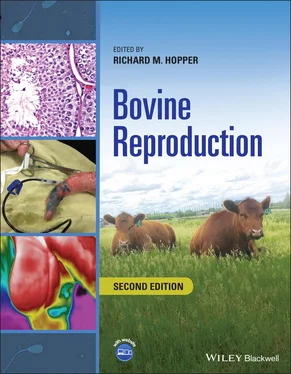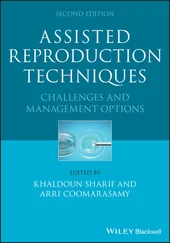19 Section III: The Neonate 72 Management to Decrease Neonatal Calf Loss in Beef Herds Introduction Risk Assessment of Calving Hazards Summary References 73 Management to Decrease Neonatal Calf Loss in Dairy Herds Introduction From Birth to Weaning Colostrum Nutrition from Birth to Weaning Calf Housing Weaning Health Maintenance References 74 Critical Care Management of the Neonate Introduction Pathophysiology of Extrauterine Neonatal Adaptation Initial Assessment and Management of the Newborn Calf Clinical Pathology Specific Perinatal Conditions of Newborn Calves Prevention of Perinatal Mortality References 75 Colostrum Introduction The Cow Colostrum Intake Colostral Volume and Time of Consumption Colostrum Source Colostrum Quality Failure in the Transfer of Passive Immunity (FTPI) Factors Associated with Transfer of Passive Immunity in Calves Diagnosis and Monitoring of Transfer of Passive Immunity Serum Brix Management Strategies to Prevent FTPI Summary References
20 Section IV: Assisted and Advanced Reproductive Technologies
21 Technological Advances that Enhance the Quantity and Quality of Spermatogenic Production 76 Utilization of Genomic Testing for the Selection of Desirable Traits in Cattle Introduction Background Simple Mendelian Traits Parentage Testing Genetic Evaluation of Production Traits Advantages of Genomic Selection Achieving Genetic Gain Through Genomics Genomic Evaluations GBLUP BOLT Use of Genomics in the Cattle Industry Male Fertility Female Fertility Conception Traits Pregnancy Traits Calving Traits Lifetime Productivity and Longevity Emerging Genomic Technologies Summary References 77 Technological Advances that Enhance the Quantity and Quality of Spermatogenic Production Feeding the 10 Billion Human Population Increasing the Quantity of Spermatogenesis per Bull Methods to Increase Sperm Production per Bull Improving the Genetic Quality of Spermatogenesis Surrogate Sires References 78 Cryopreservation of Semen Introduction Principles of Cryopreservation Role of Extenders Used for Cryopreservation Role of Cryoprotectants in Bovine Semen Freezing Steps for Cryopreservation of Bovine Semen Dilution, Initial Cooling, and Packaging Cooling Rates and Freezing Semen Thawing and Storage Newer Advances in Bovine Semen Cryopreservation References 79 Utilization of Sex‐Selected Semen Introduction Sorting Sperm by DNA Content for Gender Selection Commercialization of Bovine Gender‐Selected Semen Artificial Insemination Multiple Ovulation and Embryo Transfer In Vitro Fertilization Reverse Sorting Effect of Sex‐Sorting Procedure on Structural and Functional Parameters of Sperm Cost and Revenues Incidence of Stillbirth SexedULTRA Technology Conclusion Summary References 80 Control of Semen‐Borne Pathogens Introduction Bovine Viral Diarrhea Leptospirosis Brucellosis Tuberculosis Campylobacteriosis and Trichomoniasis Infectious Bovine Rhinotracheitis Arboviruses Enzootic Bovine Leukosis Control References 81 Bovine Semen Quality Control in Artificial Insemination Centers Introduction Objective Assessment of Sperm Motility Limitations of CASA Instruments Analysis of Sperm Function by Flow Cytometry Sperm Attributes Analyzed by Flow Cytometry Limitations of Flow Cytometry A Multiparametric Approach for Standardization and QC among SPCs Summary References 82 Superovulation in Cattle Introduction Gonadotropins and Superovulation Follicular Wave Dynamics and Superstimulation Superstimulation: The Traditional Approach Synchronization of Follicular Wave Emergence for Superovulation Summary References 83 Embryo Transfer and Embryo Collection A Brief History of Embryo Transfer Applications for Embryo Transfer Overview of the Embryo Collection Procedure “Counterfeit Money” Preventing Unwanted or Multiple Pregnancies Helpful Hints Transferring the Embryo Summary Dedication References Resources 84 Selection and Management of the Embryo Recipient Herd Introduction Nutritional Management Estrous Cycle Control Recipient‐Related Factors American Embryo Transfer Association Survey Conclusion Summary References 85 Evaluation of In Vivo Derived Bovine Embryos Introduction History of Bovine Embryo Evaluation Refinement of the Morphological Embryo Evaluation Method History of the IETS Grading and Classification System The Importance of a Good Microscope Normal In Vivo Bovine Embryonic Development IETS Grading and Classification System Stage of Embryonic Development Embryo Quality Grade Embryo Evaluation Procedure Practical Application of Embryo Evaluation Guidelines Non‐Transferable Quality Embryos Unfertilized Ova Dead or Degenerating Embryos Transferable Quality Embryos Extruded Cells Misshapen or Flat Zona Pellucida Lipids in the Cytoplasm Cracked Zona Pellucida Irregular Shape of Cells Comprising the Embryo Material Adhering to the Zona Pellucida Challenges to Accurate Embryo Grading and Classification Embryo Evaluation Tip The Effectiveness of Morphological Embryo Evaluation Conclusion Summary References 86 Control of Embryo‐Borne Pathogens Introduction First Generation of Embryo Technologies Sources of Pathogens Categorization of Pathogenic Agents of Embryos Control of Viral Pathogens Embryo Transfer as a Means of Controlling Pathogen Transmission Second Generation of Embryo Technologies Third Generation of Embryo Technologies Experimental Treatments Summary References 87 Cryopreservation of Bovine Embryos Introduction Cryopreservation Applications for Vitrification Embryo Selection, Handling, and Preparation Embryo Freezing References 88 Managing the “Problem Donor” Introduction The Donor Problems Related to Donors An Alternative for the Problem Donor: in vitro Production of Embryos Summary References 89 In Vitro Fertilization Introduction Collection of Oocytes Media Maturation Fertilization In Vitro Culture of Embryos Cryopreservation of IVP Embryos Transfer of IVP Embryos Pregnancies and Offspring Summary References 90 Cloning by Somatic Cell Nuclear Transfer Introduction and Brief History Procedures Involved Challenges Associated Summary References 91 Application of CRISPR‐Cas9 Technology in Bovine Reproduction Introduction Basics of the Genome History of CRISPR Technology Reproduction and CRISPR‐Cas9 Technology The Cattle Industry and CRISPR‐Cas9 Technology Limitations of CRISPR‐Cas9 Applications US Regulation of Gene‐Edited Food Animals References
22 Index
23 End User License Agreement
1 Chapter 2 Table 2.1 Primary steroid and peptide hormones synthesized and/or secreted by...
2 Chapter 6 Table 6.1 Genetic correlations ( r g) between scrotal circumference, growth tra... Table 6.2 Age adjustment factors for scrotal circumference (SC) at 365 days o... Table 6.3 Age, weight, and scrotal circumference (SC) at puberty (ejaculate w... Table 6.4 Effect of prepubertal nutrition (before 6 months of age) on age at ...
3 Chapter 9 Table 9.1 Layout of an example label for keys used by the Western College of ... Table 9.2 Listing of recognized sperm defects. Table 9.3 Abnormal sperm morphologies, artifacts, and other cells not include...
4 Chapter 12 Table 12.1 Basic AIC testing protocol per CSS testing requirements.
5 Chapter 15 Table 15.1 Classification of preputial prolapse.
6 Chapter 17 Table 17.1 Common nerve blocks with landmarks and volume of lidocaine for ref...
7 Chapter 25Table 25.1 Characteristics of bovine ovarian follicles during development.Table 25.2 Developmental rates of bovine ovarian follicles.
8 Chapter 26Table 26.1 Bovineuterine blood flow (UBF) during the first trimester of pregn...Table 26.2 Bovine uterine blood flow (UBF) during the second trimester of pre...Table 26.3 Bovine uterine blood flow (UBF) during the third trimester of preg...
9 Chapter 29Table 29.1 Cost summary (USD) for developing a replacement heifer.Table 29.2 Effects of dry‐lot development (DL) or grazing a combination of co...Table 29.3 Effect of maternal protein supplementation on heifer progeny perfo...
Читать дальше



